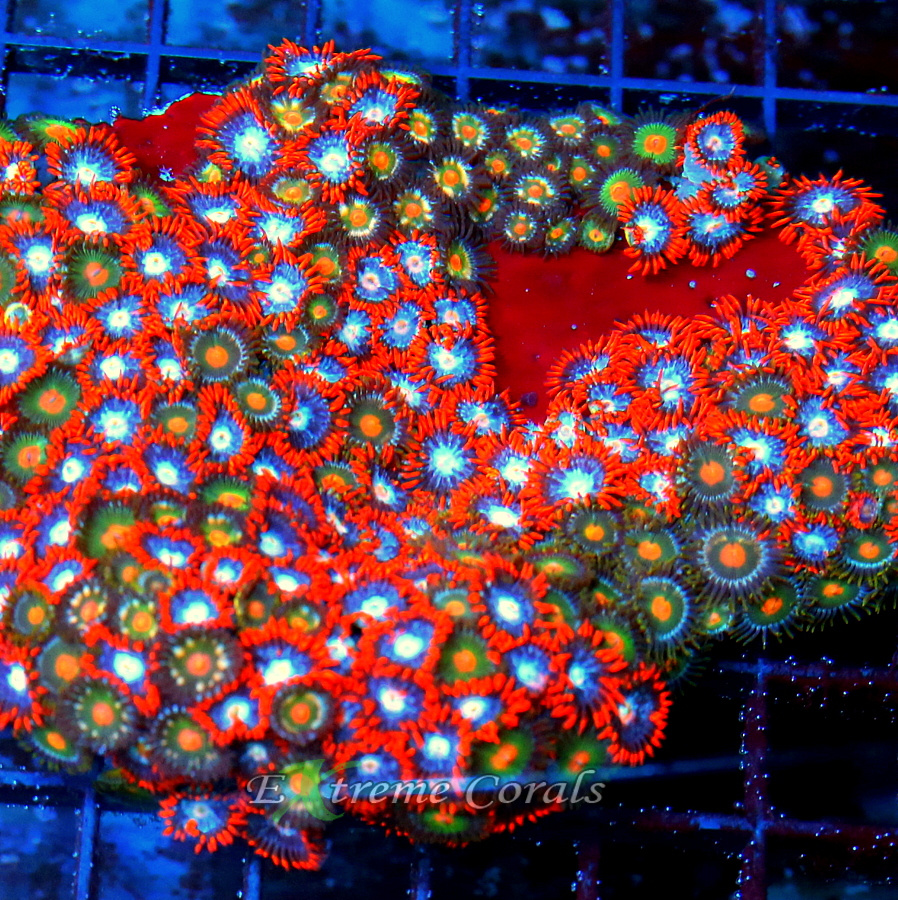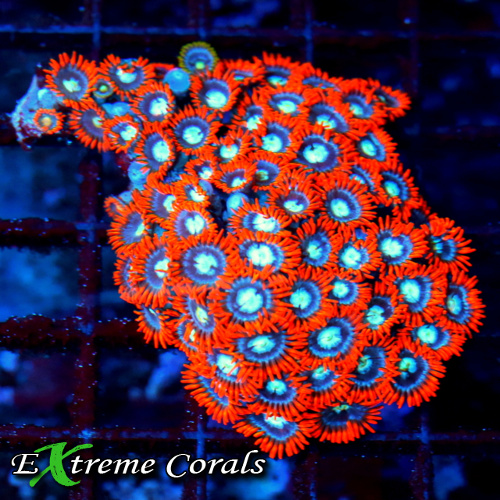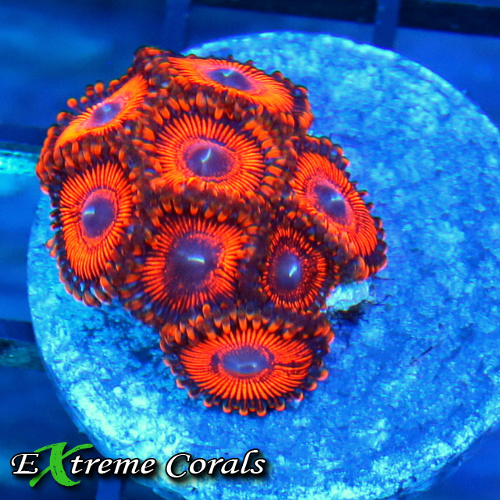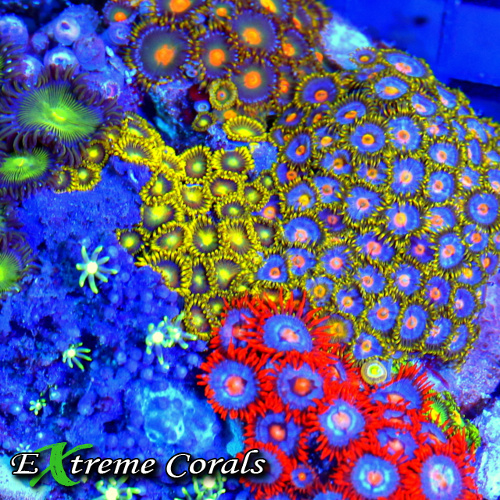Extreme Corals News and Updates
How to Care for Zoanthids in Your Home Aquarium
Discover the essential tips for caring for zoanthids in your home aquarium at 'How to Care for Zoanthids in Your Home Aquarium', and watch your marine pets thrive!
Learn how to care for Zoanthids in your home aquarium with our comprehensive guide! Discover the benefits of keeping these colorful creatures, understand their habitat requirements, and learn how to set up the ideal environment for their thriving. From feeding tips to propagation techniques, ensure the health and vibrancy of your Zoanthids with expert advice and troubleshooting tips.
by scott Shiles • April 12, 2024
Introduction to Zoanthids in Home Aquariums

Zoanthids are colorful and fascinating creatures that add life to your home aquarium. They are known for their vibrant hues and unique patterns, making them a popular choice among aquarists. Zoanthids are relatively easy to care for, making them suitable for both beginner and experienced hobbyists. These creatures thrive in well-maintained aquariums with stable water conditions. Proper lighting and regular water quality checks are essential for their health and growth. Stay tuned to learn more about these captivating creatures and how to create the perfect environment for them in your home aquarium.
Benefits of Keeping Zoanthids
Zoanthids are colorful and vibrant, adding a lively touch to your aquarium. They require minimal care, making them a great choice for beginners or busy aquarium enthusiasts. Zoanthids can help improve the water quality in your tank by consuming excess nutrients and providing oxygen. Additionally, these beautiful creatures reproduce easily, allowing you to expand your collection without much effort. Their stunning array of colors and patterns can create a stunning display in your tank, turning it into a vibrant underwater garden.
Understanding Zoanthids' Habitat Requirements
Zoanthids are often found in shallow waters with lots of light and steady water flow. In your aquarium, they will thrive in bright light and clean, flowy water. Make sure to place them in the middle to bottom part of your tank, as they prefer lower light levels than some corals. Moderate to high water flow is essential for keeping them healthy, as it helps remove waste and provides nutrients. Consider using a powerhead or wave maker to achieve this flow. Maintaining stable water parameters is crucial, so regularly check and adjust temperature, salinity, pH, and nitrate levels to keep them happy.
Providing them with a balanced diet is important for their health and growth. Zoanthids are photosynthetic, which means they rely on light for energy production. However, they can also benefit from supplemental feeding. Offering them phytoplankton, zooplankton, or coral food occasionally can help ensure they receive all the nutrients they need to thrive. Be cautious not to overfeed, as excess food can lead to water quality issues. Additionally, zoanthids may appreciate occasional feedings of amino acids to boost their coloration and growth.
Setting Up the Ideal Environment for Zoanthids
Lighting: Zoanthids require moderate to high lighting levels. LED lights are preferred for their energy efficiency and ability to mimic natural sunlight.
Water Quality: Maintain stable water parameters, including temperature (75-80°F), salinity (1.023-1.025), and pH (8.1-8.4). Regular water testing and changes are essential.
Flow: Zoanthids thrive in moderate water flow. Use powerheads or wavemakers to simulate ocean currents and prevent detritus buildup.
Feeding: While Zoanthids can get nutrients from symbiotic algae, supplement their diet with phytoplankton or coral-specific food to promote growth.
Fragging: Learn the proper techniques for fragging Zoanthids to propagate and expand your collection. Use caution and proper tools to avoid harming the coral.
Pests: Keep an eye out for common pests like zoanthid spiders and nudibranchs. Quarantine new additions to prevent introducing pests to your aquarium.
Lighting: Provide moderate to high lighting for optimal growth.
Water Parameters: Maintain stable water parameters, including temperature between 72-78°F, salinity around 1.025, and pH levels between 8.0-8.4.
Water Flow: Ensure adequate water flow to prevent algae buildup and promote nutrient exchange.
Placement: Place Zoanthids in low to medium flow areas to prevent damage to their delicate structures.
Frequent Water Changes: Regular water changes help maintain water quality and remove excess nutrients.
Feeding and Nutrition for Zoanthids

Zoanthids are generally easy to care for as they mostly feed through photosynthesis from the light in your aquarium. However, they can benefit from occasional feeding to help them thrive. Feeding zoanthids can be done by providing them with small food particles such as marine snow, plankton, or specialized coral food. It's important not to overfeed them as it can lead to water quality issues. Regularly monitor your zoanthids to ensure they remain healthy and vibrant.
Monitoring and Maintaining Water Quality
To keep your zoanthids healthy, it's crucial to regularly check and maintain the water quality in your aquarium. Here are some tips:
Test the water parameters like ammonia, nitrite, nitrate, pH, salinity, calcium, and magnesium using a reliable test kit.
Ensure that the temperature of the water stays within the suitable range for zoanthids, usually between 72-78°F.
Regular water changes are necessary to remove accumulated waste, replenish essential minerals, and maintain stable water parameters.
Consider using a protein skimmer to help with water filtration, oxygenation, and removing organic compounds.
Monitoring and maintaining proper water quality will contribute to the overall well-being and vibrant coloration of your zoanthids.
Common Issues and Troubleshooting Tips
If your zoanthids suddenly close up or look unhealthy, it could be due to water quality issues or pests. Here are some common problems you might encounter and how to address them:
Ensure stable water parameters, especially for temperature, salinity, and nutrient levels.
Look out for signs of pests like zoanthid-eating nudibranchs or zoa spiders.
Dip new frags in coral dips before adding them to your tank to prevent introducing pests.
Quarantine new zoanthids to prevent contaminating your main tank if they carry pests.
Frequent water changes can help maintain good water quality and keep zoanthids healthy.
If zoanthids appear closed, check for any signs of stressors like changes in water flow or lighting.
Consider using a magnifying glass to inspect for tiny pests that might be harming your zoanthids.
Keep an eye on your zoanthids' behavior and appearance to catch any issues early and keep them thriving in your aquarium.
Propagation Techniques for Zoanthids

To propagate Zoanthids in your home aquarium, you can use techniques like fragging and polyp division. Fragging involves cutting a Zoanthid colony to create new individual pieces. Polyp division means separating the polyps from a colony to grow separately. Both methods require careful handling to ensure the health of the Zoanthids.
When fragging Zoanthids, it is essential to use sterilized tools to prevent the introduction of any harmful bacteria or contaminants. The cut pieces should be placed in a stable environment with appropriate water parameters to promote healthy growth. Regular monitoring is crucial to detect any signs of stress or disease and intervene promptly.
Polyp division can be a delicate process, as each polyp needs to be carefully separated without damaging the tissue. Providing adequate space and light for the newly separated polyps will encourage their growth and development. Maintaining water quality and stability is key to the success of this propagation method.
By following proper techniques and providing optimal conditions, you can successfully propagate Zoanthids in your home aquarium, expanding your coral collection and creating a thriving underwater ecosystem.
Interaction with Other Marine Life
Compatibility: Zoanthids can be aggressive towards other corals and may sting them if they come into contact. It's crucial to place them strategically in the tank to prevent any conflicts.
Toxicity: Some species of zoanthids produce toxins that can be harmful to other tank inhabitants. Be cautious when handling them and consider using gloves to protect your skin.
Feeding: Zoanthids are photosynthetic but can also benefit from supplemental feedings. Providing them with phytoplankton occasionally can help enhance their growth and overall health.
Water Parameters: Maintaining stable water parameters is key to the well-being of zoanthids. Ensure proper lighting, temperature, pH levels, and water flow in the aquarium.
Propagation: Zoanthids can reproduce quickly in the right conditions. Regularly check for new growth and frag them if needed to prevent overcrowding in the tank.
By keeping these factors in mind, you can create a thriving environment for your zoanthids and other marine life in your aquarium.
Zoanthids are known to release toxins that can harm other corals and invertebrates in the tank.
Avoid placing aggressive or predatory species near zoanthids to prevent any conflicts.
Some fish, like certain species of angelfish, have been known to nibble on zoanthids, causing damage to their colonies.
Keeping a watchful eye on the interactions between your zoanthids and other marine life is crucial to maintaining a harmonious aquarium environment.
Final Thoughts on Zoanthid Care
Taking care of Zoanthids in your home aquarium can be a rewarding experience. By maintaining stable water parameters, providing adequate lighting, and regular observation for any signs of stress or disease, you can ensure the health and longevity of your Zoanthids. Remember to quarantine new additions to prevent introducing pests or diseases into your tank, and always handle Zoanthids with care due to their toxin-producing capabilities. Overall, with proper attention and care, Zoanthids can thrive and add beauty to your aquarium environment.

